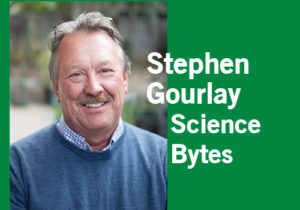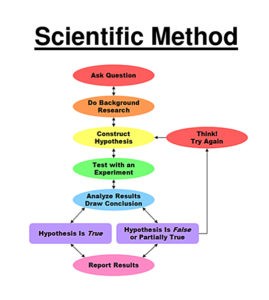The Scientific Method is the foundation of modern science
 This is the first of what I hope to be a series of articles on science-related topics.
This is the first of what I hope to be a series of articles on science-related topics.
Since I’m a physicist, they’ll lean in that direction. To get us all on the same page, I’ll start by describing what science is.
Even before the beginning of recorded history, humans have observed the universe they live in – gathering an extensive body of knowledge along the way. Generally speaking, this body of knowledge is sometimes referred to as “science.”
Measurements
For thousands of years, this observational approach formed the basis of our evolving understanding of the universe. Measurements, a form of observation expressed in numbers, are a key aspect of science. More than 2,000 years ago, the Greeks made some fairly accurate measurements of the sizes of the earth, moon and sun and the distances between them.
This is how things more or less went until about 400 years ago, when Francis Bacon explicitly described a systematic approach to gathering knowledge that Galileo Galilei brought into practice.
This world view or paradigm is called the Scientific Method, the process used by scientists around the world that forms the basis of modern science.
It was not necessarily a new idea at the time and was heavily influenced by practitioners in ancient Babylon, Hellenistic Alexandria and the medieval Middle East. The Chinese also had their own scientific tradition.
Wrong vs. right
 The Scientific Method is a rigorous process for accumulating knowledge and serves as a check that we are not fooled by others or, more importantly, by ourselves. In science, it is more important to be able to prove something wrong than prove something right.
The Scientific Method is a rigorous process for accumulating knowledge and serves as a check that we are not fooled by others or, more importantly, by ourselves. In science, it is more important to be able to prove something wrong than prove something right.
The knowledge based on this approach is constantly growing and changing. Scientists may be quite attached to an idea (especially their own), but they know that they have to abandon their idea when the process uncovers evidence to the contrary.
The process starts with an observation that generates a question. “Why” is the favorite word of scientists and 3-year-olds.
The next step is to make a hypothesis, or a “guess,” to explain what you observe or measure. Scientists refer to this as a model.
Based on your model, you make a prediction and test it by way of another observation or by doing an experiment, which is just another type of observation. Next, you modify your model to accommodate the result of your experiment and iterate. It’s a continuous process.
Upgrade to a theory
If your model eventually leads to a broader understanding of other observed phenomena, it gets upgraded to a theory.
And then, after much more rigorous testing and even broader application and predictability, a hypothesis can become a physical law. For example, the law of conservation of energy says that energy cannot be created or destroyed. This is the law that perpetual motion machines try to violate.
Finally, in order for an idea or experimental result to be accepted by the scientific community, others must be able to reproduce it and independent experts must thoroughly review it. Even then, it is susceptible to new and better information.

Steve Gourlay
Steve Gourlay is a career scientist with a PhD in experimental particle physics. He recently retired after working at the Fermi National Accelerator Laboratory, CERN (the European Center for Nuclear Research) and the Lawrence Berkeley National Laboratory. Send questions and comments to him at sgpntz@outlook.com.
